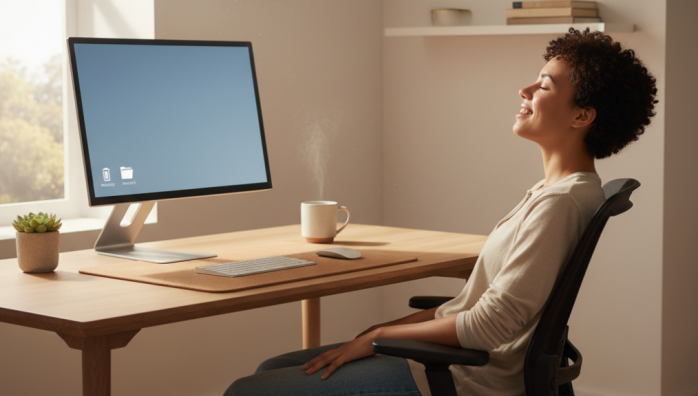Decluttering your digital desktop and files
by admin in Productivity & Tools 17 - Last Update November 15, 2025

I used to treat my computer's desktop as a digital junk drawer. It was a chaotic landscape of screenshots, random documents, and temporary files that had become permanent residents. I told myself it was a sign of a creative mind at work, but honestly, it was a source of constant, low-grade anxiety. Every time I minimized a window, I was met with a visual representation of my own disorganization, and it was draining my focus before I even started working.
Why my old methods never worked
For years, I'd try the brute-force approach. Once every few months, I'd spend a whole Saturday creating an intricate system of nested folders, convinced this was the solution. But the system was always too rigid, too complex. Within a week, new files would start piling up on the desktop again because filing them felt like a chore. The cycle of clutter and cleanup was exhausting. I realized the problem wasn't the files themselves, but my relationship with them.
The trap of infinite storage
Part of the problem, I think, is that modern storage is practically infinite. We're not forced to be selective. Unlike a physical filing cabinet that gets full, a hard drive just quietly accommodates our hoarding tendencies. This 'out of sight, out of mind' mentality led me to keep everything, 'just in case,' without any real strategy.
My simple system for digital clarity
After a lot of trial and error, I landed on a system that's less about complex rules and more about simple, repeatable habits. It’s based on reducing friction and making the right choice the easiest choice.
Step 1: The desktop triage
First, I created a single folder on my desktop named '_INBOX'. That's it. Everything—and I mean everything—that lands on my desktop goes directly into this folder immediately. This one change instantly gave me a clean slate. The rule is simple: the desktop itself is a temporary landing zone, not a home.
Step 2: An action-oriented folder structure
Inside my main 'Documents' folder, I abandoned complicated categories. I now use a ridiculously simple, four-folder system. It’s a core part of my minimalist digital setup:
- 01_Projects: For anything I am actively working on right now.
- 02_Resources: A library of useful articles, templates, and assets I refer to often.
- 03_Archive: Everything that's finished but needs to be kept for reference.
- 04_Personal: For non-work-related items like photos and personal documents.
The numbers keep them in a logical order. This structure forces me to ask, 'What is the next action for this file?' instead of 'What category does this belong to?'
Step 3: The weekly reset ritual
This is the habit that makes it all stick. Every Friday afternoon, I spend 15 minutes processing my '_INBOX' folder. I sort every file into my four-folder system, delete what's no longer needed, and empty the trash. It’s a small ritual that prevents overwhelm and ensures I start every week with a completely clear digital workspace. It's my moment of digital zen.
The journey to digital peace
Adopting this minimalist approach wasn't just about having a tidy screen. It was about reducing decision fatigue. I no longer waste mental energy looking for files or feeling guilty about the digital mess. It has freed up cognitive space, allowing me to focus on what truly matters. It's a small change, but the impact on my daily productivity and peace of mind has been profound.














